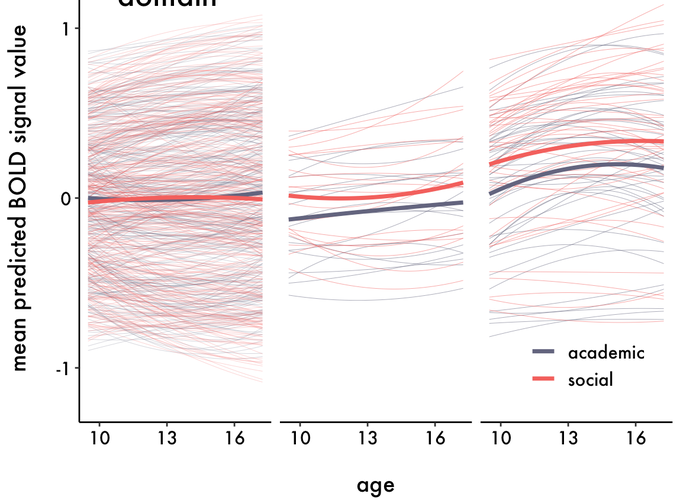Testing the adolescent social reorientation model during self and other evaluation using hierarchical growth curve modeling with parcellated fMRI data
Abstract
Adolescence is characterized as a period when relationships and experiences shift toward peers. The social reorientation model of adolescence posits this shift is driven by neurobiological changes that increase the salience of social information related to peer integration and acceptance. Although influential, this model has rarely been subjected to tests that could falsify it, or studied in longitudinal samples assessing within-person development. We focused on two phenomena that are highly salient and dynamic during adolescence—social status and self-perception—and examined longitudinal changes in neural responses during a self/other evaluation task. We expected status-related social information to uniquely increase across adolescence in social brain regions. Despite using hierarchical growth curve modeling with parcellated whole-brain data to increase power to detect developmental effects, we didn’t find evidence in support of this hypothesis. Social brain regions showed increased responsivity across adolescence, but this trajectory was not unique to status-related information. Additionally, brain regions associated with self-focused cognition showed heightened responses during self-evaluation in the transition to mid-adolescence, especially for status-related information. These results qualify existing models of adolescent social reorientation and highlight the multifaceted changes in self and social development that could be leveraged in novel ways to support adolescent health and well-being.
A complimentary, interactive tool to explore the developmental trajectories based on how a given parcel is labelled is provided as a Shiny App: https://dcosme.shinyapps.io/growth_curves/
